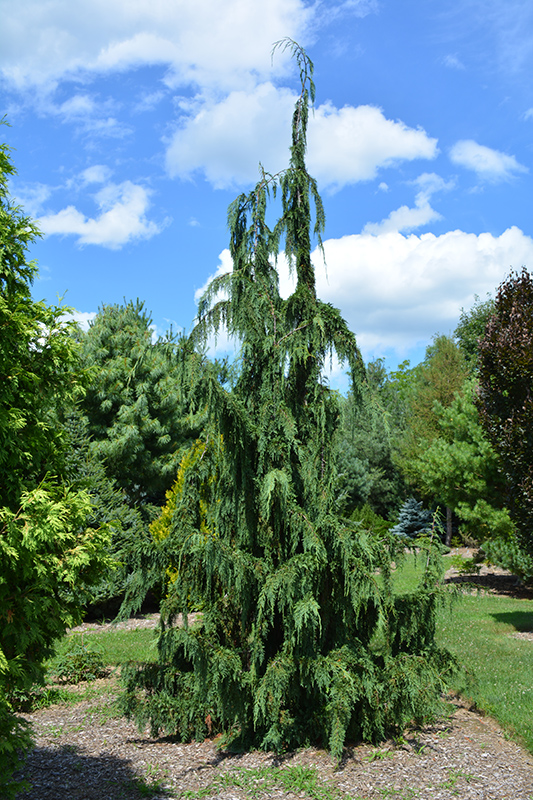Cedar, (Alaskan Weeping) Jubilee Chamaecyparis nootkatensis 'Jubilee' Height: 25 feet Spread: 12 feet
Sunlight:
Hardiness Zone: 4b Other Names: Alaska Cedar, Nootka Falsecypress, Xanthocyparis Description: A towering, graceful, delicately weeping tree with pendulous branches, more so than the species; a great accent tree for the home landscape Ornamental Features Cedar, (Alaskan Weeping) Jubilee is primarily valued in the landscape for its highly ornamental weeping form. It has bluish-green evergreen foliage. The scale-like sprays of foliage remain bluish-green throughout the winter. The shaggy antique red bark adds an interesting dimension to the landscape. Landscape Attributes Cedar, (Alaskan Weeping) Jubilee is an open evergreen tree with a strong central leader and a rounded form and gracefully weeping branches. Its average texture blends into the landscape, but can be balanced by one or two finer or coarser trees or shrubs for an effective composition. This is a relatively low maintenance tree, and may require the occasional pruning to look its best. Deer don't particularly care for this plant and will usually leave it alone in favor of tastier treats. It has no significant negative characteristics. Cedar, (Alaskan Weeping) Jubilee is recommended for the following landscape applications; Planting & Growing Cedar, (Alaskan Weeping) Jubilee will grow to be about 25 feet tall at maturity, with a spread of 12 feet. It has a low canopy with a typical clearance of 1 foot from the ground, and is suitable for planting under power lines. It grows at a medium rate, and under ideal conditions can be expected to live for 70 years or more. This tree does best in full sun to partial shade. It prefers to grow in average to moist conditions, and shouldn't be allowed to dry out. This plant should be periodically fertilized throughout the active growing season with a specially-formulated acidic fertilizer. It is not particular as to soil type or pH. It is somewhat tolerant of urban pollution. This is a selection of a native North American species. Special Attributes Sheds some inside foliage in the autumn or spring, few to some 1/4 to 1/2 inch seeds. Chamaecyparis are not classified as toxic to people or pets. Evergreens need to be watered during the winter. Our desert climate especially in late winter to early spring evergreens can suffer during next growing season. An easy way to remember check for dryness on the holidays Halloween, Thanksgiving, New Year's Day, Valentines Day & Easter.![]()
![]()
![]()
![]()
![]()
![]()
![]()
![]()
![]()
![]()
![]()
![]()

